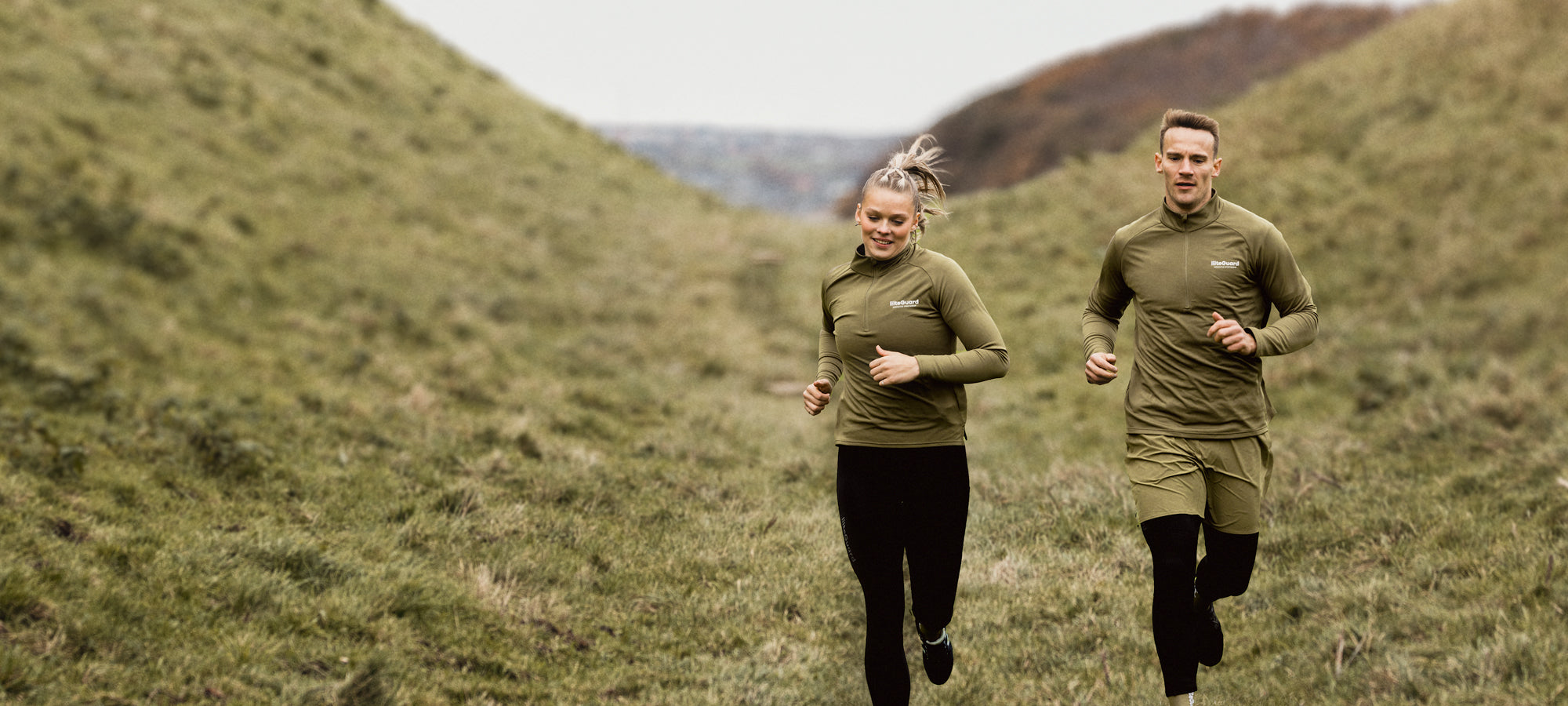THE IDEA
Liiteguard was founded by a former professional football player and a sports physiotherapist.
The idea for the product originated in June 2016, when Christopher Geertsen sought out physiotherapist Nicklas Falkesgaard to get help for long-standing knee problems. Along the way, they came to talk about some of the problems they both had experienced over and over again with many footballers. The mission was to create a product that could solve some of these problems.
Our story
From our backgrounds in professional football, we had both experienced our fair share of injuries and complications related to the lower leg. Sore or tense calves or Achilles tendons after an intense match or training is very normal, much like calf cramps after intense activity.
The original idea behind the product, however, was to solve a different problem - unrelated to injuries. We both had - countless times - stood in a dressing room just before a match, and seen players put on shin guards. Or that is to say: put something on to fix their shin guards. Over the years, we had both seen some creative solutions of fluctuating quality, but most often was the use of both sock tape and an under wrap to keep the shin guard in place.
The idea behind our product was that shin guard protection could be done in a better, easier and more convenient way. Therefore, we made a product with a light shin guard, comfortable to wear, which could stay in place without the use of tape. As the idea took off, we became more and more focused on also addressing the other problems that a player experiences in the lower leg and ankle.
We had, as mentioned, a lot of experience with pain and injuries football players get, especially related to the lower parts of the leg. We also understood that the use of shin guards was generally perceived as a problem and an irritation for many players.
We decided to test out if we were on to something, and conducted a market survey where we got Danish footballers ranging from U17 to Seniors to complete a questionnaire. The players' levels ranged from Division 1 to the Superliga.
From our survey, we could conclude the following:
- 76% said it was important or very important that the shin guard was light
- 83% said it was important or very important that the shin guard was as small as possible
- 80% said it was important or very important that the fit was good
- 89% said they used tape or underwrap to keep their shin guards in place.
- 48% had to some extent (30%) or to a high degree (18%) Experienced pain or soreness in the Achilles tendon
- 74% had to some extent (54%) or to a high degree (20%), experienced muscle stiffness or cramps in the calves.
- 51% had to some extent (37%) or to a high degree (14%) experienced blisters due to football boots.
The market survey confirmed our suspicions and we concluded that there was a real demand for a product that could solve player problems. We set out to tackle the issue of pain in the lower leg, as well as improving players’ experiences with shin guards.
Liiteguard’s solution is our unique compression sock and shin guard
Our shin guard is lightweight, weighing in at only 75 grams. Despite its lightweight, our shin guard is the same size as the most popular guards on the market. We have made our guards from a special material that you can shape in a short amount of time, so that the guard fits you perfectly.
Our shin guard fits securely in our Liiteguard sock, and stays in place during activity, without the use of tape or underwrap.
Our sock has a compressive effect throughout the lower leg, which can reduce muscle aches and stiffness during and after intense physical activity. There is also an extra tight compression on the Achilles tendon, which can reduce Achilles tendon pain.
We have placed silicone coating under the foot sole, ensuring that you don't slip around in your boot, which can happen in normal soccer socks. The sole is made of a material called SoftAir Plus, which transports sweat away from skin faster than cotton, so your foot feels drier. The material also functions to maintain heat if you are inactive or cold, while also removing heat via sweat when you’re active.


